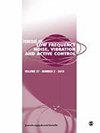低频噪音和幻音
IF 2.4
4区 工程技术
Q1 Earth and Planetary Sciences
Journal of Low Frequency Noise Vibration and Active Control
Pub Date : 2009-06-01
DOI:10.1260/0263-0923.28.2.105
引用次数: 5
摘要
在家里遭受或多或少连续或多或少稳定的低音可能是对健康的严重威胁。通常声源不明显或找不到。在许多情况下,对环境声音的分析没有明确的证据表明干扰声音可能是什么。因此,低频噪声(LFN)已经成为一个不祥的概念,是要求理解和解决方案的患者与经常束手无策的专家之间的对抗。根据所报告的测量结果,人们必须得出结论,至少在某些情况下,LFN实际上不可能或甚至不可能达到相关水平。尽管如此,患者仍然坚信一定有真实的外部来源。一个更简单的解释可能是没有,但声音来自人的内心。当被带到一个非常安静的环境中时,正常听力的人经常会听到低音调和其他不存在的声音:幻音。有一种假设是,当无法确认物理声音的存在时,LFN患者会像其他人在一个非常安静的地方一样听到低沉的幽灵声,但却无法识别它。这可能有助于患者了解这是一种神经现象,而不是心理现象。更多地了解患者对这种声音的了解,再加上家里有更多真实的声音,可能有助于减轻他们的抱怨。本文章由计算机程序翻译,如有差异,请以英文原文为准。
Low Frequency Noise and Phantom Sounds
Suffering from more or less continuous and more or less steady low pitched sounds at home can be a serious threat to well-being. Often the sound source is not obvious or cannot be found. In many cases there is no clear evidence from the analysis of the ambient sound what the disturbing sound could be. Thus Low Frequency Noise (LFN) has become an ominous concept, a confrontation between sufferers asking for understanding and a solution and experts who are frequently helpless. From reported measurements one must conclude that at least in some cases it is improbable or even impossible that LFN is actually present at a relevant level. Although, even then, sufferers often are convinced there has to be a real, external source. A much simpler explanation may be there is not, but the sound originates within the person. When brought in a very quiet environment, normally hearing people often hear low pitched and other sounds not physically present: phantom sounds. A hypothesis is that, when the presence of a physical sound cannot be confirmed, LFN sufferers hear low pitched phantom sounds as other people would in a dead quiet place, but do not recognize it than such. It may help sufferers to know this is a neurological phenomenon, not a psychological one. More knowledge of the sufferer about such sounds combined with the presence of more real sound at home could help to relieve the complaints.
求助全文
通过发布文献求助,成功后即可免费获取论文全文。
去求助
来源期刊
CiteScore
5.40
自引率
4.30%
发文量
0
审稿时长
4.2 months
期刊介绍:
Journal of Low Frequency Noise, Vibration & Active Control is a peer-reviewed, open access journal, bringing together material which otherwise would be scattered. The journal is the cornerstone of the creation of a unified corpus of knowledge on the subject.

 求助内容:
求助内容: 应助结果提醒方式:
应助结果提醒方式:


